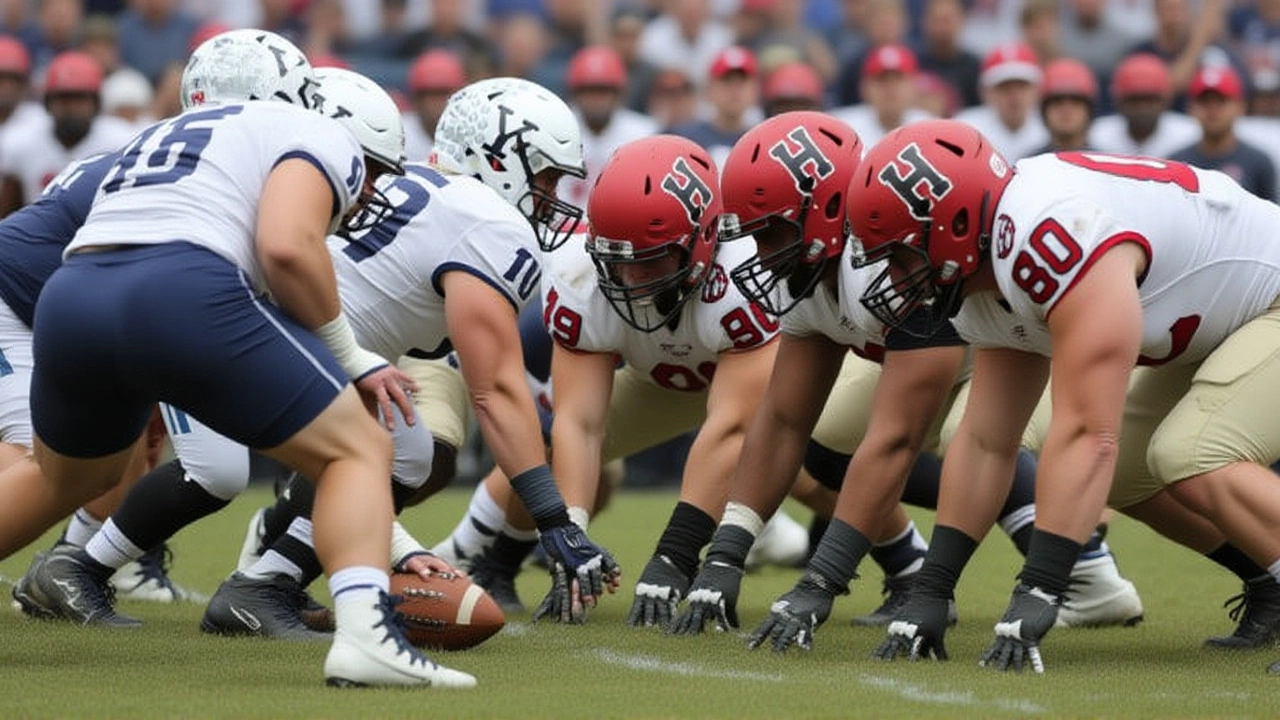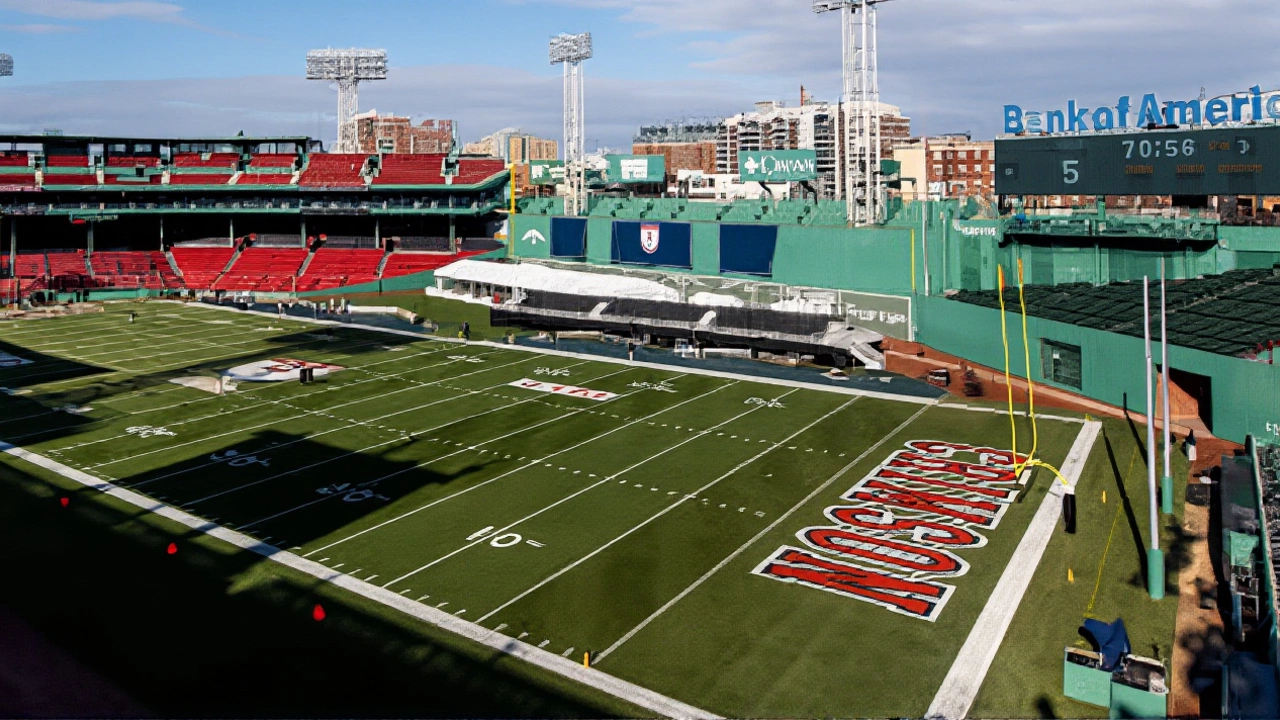The Harvard-Yale football rivalry is returning to one of America’s most iconic sports venues: Fenway Park. On the 142nd edition of 'The Game'Boston, the Harvard Crimson and Yale Bulldogs will clash under the ivy-draped bleachers of the world’s oldest active Major League Baseball stadium. The announcement, made on August 27, 2025, by Fenway Park Events and confirmed by the Boston Red Sox, marks a rare return to the ballpark for this storied college rivalry — last held there in 2018. For fans who’ve grown up watching the Red Sox fight for pennants, this is more than a game. It’s a collision of heritage.
A Rivalry Older Than the Stadium
The Game didn’t just begin in 1875 — it helped invent American football. The first meeting between Harvard and Yale was a 3-0 win for Harvard in a match that blended rugby and soccer, played with 15 players per side and no forward passes. It was so chaotic, so raw, so gloriously unpolished that it became the blueprint for the sport we know today. Unlike modern college football, which leans heavily into branding and broadcast deals, Harvard-Yale has always been about tradition, alumni pride, and quiet intensity. No marching bands. No cheerleaders in pom-poms. Just 11 men on each side, a century of grudges, and a trophy that’s been passed back and forth like a family heirloom.Even during the pandemic, when most college sports shut down, the rivalry held on — rescheduled, not canceled. That’s how deeply rooted it is. And now, after eight years, it’s coming back to Fenway, where the grass is still cut in the same diagonal pattern as it was in 1912, and the Green Monster still looms like a silent referee.
Why Fenway? It’s Not Just a Ballpark
Sam Kennedy, President & CEO of the Boston Red Sox, didn’t mince words: “Fenway Park was built for moments that stand the test of time.” And he’s right. The ballpark has hosted everything from jazz concerts to political rallies, but its football history is quietly legendary. In 2015, it welcomed the Notre Dame–Boston College Shamrock Series. In 2017, the Fenway Gridiron Series brought in Holy Cross and Fordham. Then came 2018 — the last time Harvard and Yale played here. The crowd? Over 40,000. The weather? Crisp, golden, perfect. The final score? Harvard 30, Yale 23. Fans still talk about it.
But this isn’t just nostalgia. It’s strategy. The Red Sox organization sees this as a way to keep the ballpark alive in the off-season, to draw in alumni from both schools — many of whom live within a 50-mile radius — and to remind New Englanders that this place isn’t just for baseball. “We’re not just renting the field,” Kennedy said. “We’re honoring a tradition that predates television, radio, even the automobile.”

Harvard’s Perspective: Tradition Meets Transition
For Erin McDermott, the Harvard University Director of Athletics, this isn’t just about logistics — it’s about identity. “Competing in such a historic Boston sports venue adds new energy and meaning to one of the greatest rivalries in college athletics,” she said. “It’s a bridge between the past and the future.”
Harvard’s team has struggled in recent years, going 3-7 in 2023 and 4-6 in 2024. But this game? It’s different. The weight of history doesn’t care about win-loss records. For the players, walking out of the Red Sox locker room — the same one used by Ted Williams and David Ortiz — and onto that same field where Jackie Robinson once played baseball? That’s the kind of moment that changes careers. And maybe even lives.
What Comes Next? The Details Are Still Unfolding
Right now, the only firm details are the date — November 21, 2026 — and the location. Kickoff time? Still TBA. Ticket onsale? No announcement yet. But given the demand, expect a frenzy. In 2018, tickets sold out in under 90 minutes. This time, with both schools’ alumni networks more connected than ever, and with social media primed for hype, the Red Sox are preparing for a surge. They’ve already hinted at special packages for students and alumni, possibly including guided tours of the Green Monster and post-game receptions.
And let’s not forget the ripple effect. The Secretaries’ Cup between Boston College and UMass will be played at Fenway just six days before — on November 15, 2025. Then, on November 22, 2025, Georgetown and Holy Cross will take the field. That’s three college football games in less than a month. Fenway is becoming the de facto home of New England’s collegiate gridiron.

Why This Matters Beyond New England
College football is a billion-dollar industry now — stadiums hold 100,000 fans, coaches earn $10 million, and games are broadcast to 20 countries. But The Game is a relic from another time. No TV timeouts. No corporate logos on the field. Just two schools, two towns, and a shared history that predates the Internet, the smartphone, even the electric light.
By choosing Fenway, Harvard and Yale aren’t just playing a game. They’re making a statement: that tradition still has value. That some rivalries don’t need flashy gimmicks to matter. That a 150-year-old contest can still stop a city in its tracks.
And in a world where everything feels temporary — where apps come and go, trends fade in weeks, and stadiums get renamed every other year — Fenway Park, with its cracked seats and creaky scoreboard, remains a monument to endurance. So does this game.
Frequently Asked Questions
How does this affect Harvard and Yale students?
For students, this isn’t just a game — it’s a once-in-a-lifetime experience. Alumni from both schools often return to Boston for the event, creating a massive influx of visitors. Harvard’s student body, mostly in Cambridge, and Yale’s in New Haven, will have access to special shuttle services and discounted tickets. Many students report that attending The Game at Fenway becomes a defining memory — more meaningful than any home game on campus.
Why was Fenway Park chosen over a traditional college stadium?
Fenway’s intimate size — seating around 37,000 for football — creates an electric atmosphere that larger stadiums can’t match. Unlike massive venues like the Yale Bowl or Harvard Stadium, Fenway forces fans close to the action. The Green Monster looms over the end zone, and the historic architecture adds a visual drama no modern field can replicate. Organizers also wanted to celebrate Boston’s sports legacy, not just host a game.
Has Fenway hosted other college football games recently?
Yes. In 2025 alone, Fenway will host the Secretaries’ Cup on November 15 and the Georgetown–Holy Cross game on November 22. Before that, the Red Sox hosted the Notre Dame–Boston College Shamrock Series in 2015 and the Fenway Gridiron Series in 2017. The 2018 Harvard-Yale game drew over 40,000 fans, proving the venue’s viability for college football despite its baseball design.
What’s the historical significance of the Harvard-Yale rivalry?
The first Harvard-Yale game in 1875 is widely considered the birth of modern American football. It introduced rules that evolved into today’s game — including the line of scrimmage and the system of downs. The rivalry has been played annually since then, with only a few interruptions (including 2020 due to COVID). It’s the second-oldest college football rivalry in the U.S., behind only Princeton–Yale. The trophy, awarded since 1900, is one of the most cherished in collegiate sports.
Will this game be televised?
While no network has been officially announced, past Harvard-Yale games have aired on ESPN or the Ivy League Digital Network. Given Fenway’s national appeal and the rarity of the venue, a major broadcast deal is likely. Even if not televised live, the game will be streamed through official university and Red Sox channels, with highlights guaranteed to go viral among alumni networks.
How will the field fit in Fenway Park’s baseball configuration?
The football field will be installed diagonally across the infield, running from third base to first base — the same setup used in 2018. The Green Monster will serve as the north end zone, and the right-field wall will become the sideline. Temporary seating will be added along the foul lines, and the field will be covered with synthetic turf over the dirt. It’s a logistical challenge, but one the Red Sox have mastered before — and they’ve got the blueprints ready.

